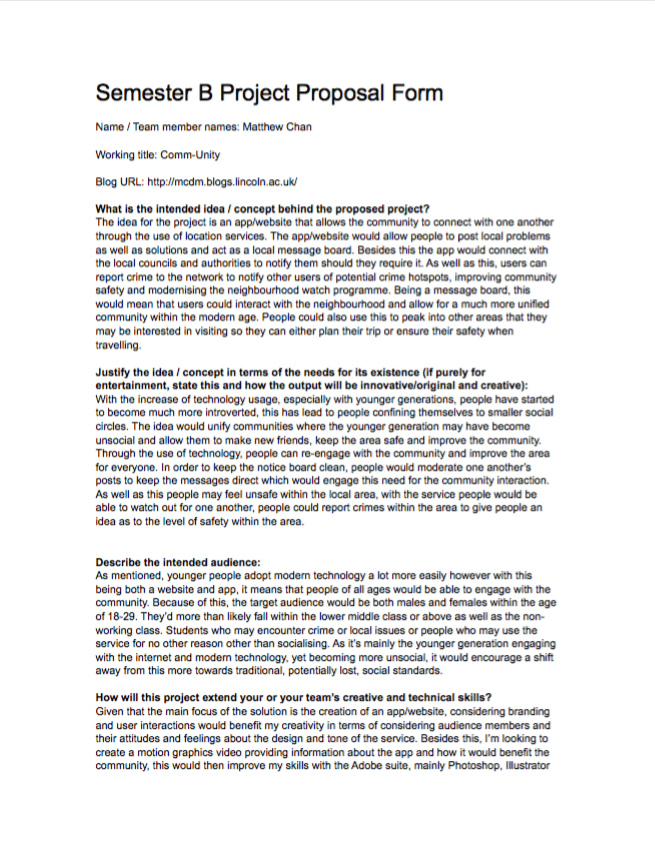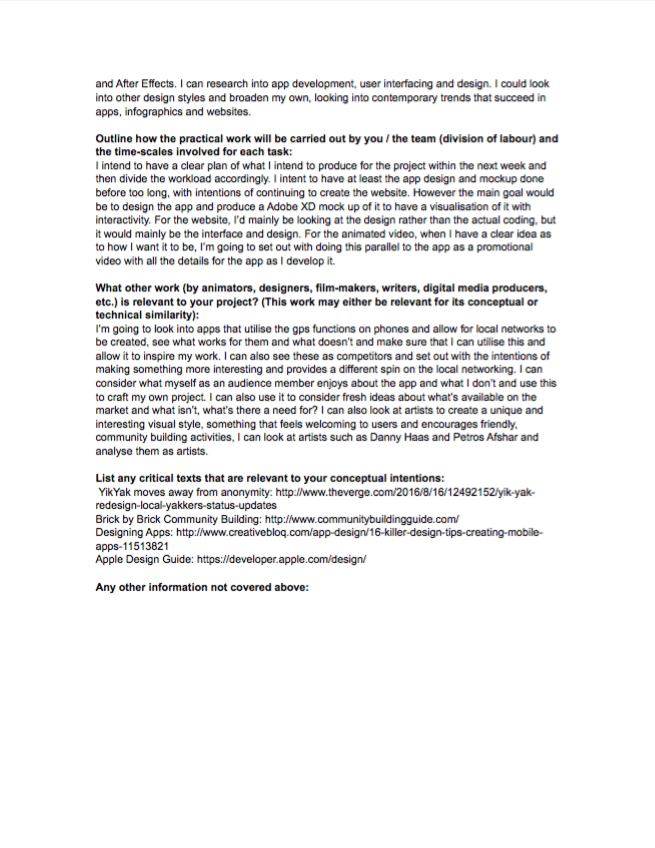This week we submitted our proposals. Working on this meant that we could focus our ideas and consider how we’d share the idea with others in a much cleaner way. It made us prioritise the important and key ideas regarding the project and focus on getting the idea across clearly as though we were actually pitching the idea to a selection of backers. The questions asked made us consider what exactly we are putting into our projects, what we need to consider with each of the products as well as what we’re neglecting within the project. This also meant we could consider our project time line and how much time we need to allocate to each of the products which would help keep us on track for the semester. This also asked the question: Who inspired us? Whose work should we be looking at for the project? With this, I then began to consider how the products are going to look, how I can craft something graphically that appeals to the target audience. I didn’t settle on a look but I thought of a few ways to keep the design looking clean.
Having already considered certain artists and styles for the branding and interface designs, I was able to narrow my scope and really consider if I was taking on too much of a workload just for the sake of it. This then allowed me to consider how long I have for the project and how long I should delegate to each of the projects including research, conceptualisation and development. Asking questions regarding who I could ask to help with the project allowed me to consider being a bit more ambitious with the project by bringing on fellow collaborators. Having to justify the project felt like it would clear my head and allow me to think about what I specifically want with this project, what I want to make, why it would benefit society etc.

